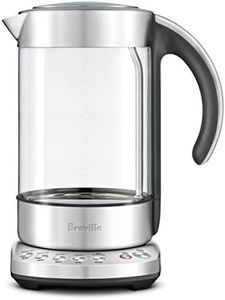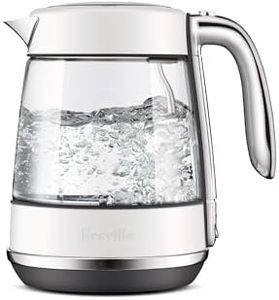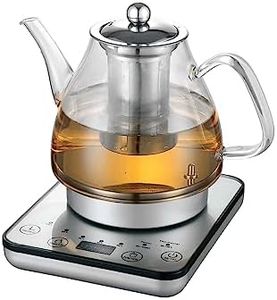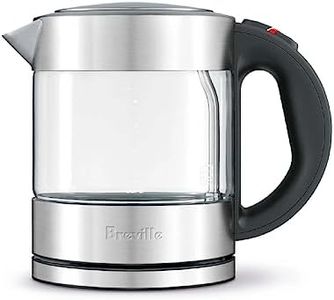We Use CookiesWe use cookies to enhance the security, performance,
functionality and for analytical and promotional activities. By continuing to browse this site you
are agreeing to our privacy policy
10 Best Glass Electric Tea Kettles
From leading brands and best sellers available on the web.Buying Guide for the Best Glass Electric Tea Kettles
When selecting a glass electric tea kettle, it's essential to consider how you plan to use it and what features matter most to you in your daily routine. Glass kettles offer the benefit of seeing the water level and boast a modern design, but they come with a variety of features and specifications that can affect performance, longevity, and user experience. To make the best choice, consider what matters most for your lifestyle: speed, ease of cleaning, safety, and the types of drinks you prepare most often.Capacity (Volume)Capacity refers to how much water the kettle can hold at once, usually measured in liters. This spec is important because it determines how much tea, coffee, or other hot drinks you can make in a single boil. Smaller kettles (around 1 liter) are great for individuals or couples with limited kitchen space, while larger kettles (1.5 - 2 liters or more) are better for families or entertaining guests. To pick the right size, think about your typical usage: do you usually boil just one or two cups, or do you often need enough for several people at once?
Wattage (Power Rating)Wattage tells you how much power the kettle uses; higher wattage generally means faster boiling times. Kettles may range from about 1200 to 2200 watts. Lower wattage boils slower but may be a bit quieter. If you're always in a hurry, look for a higher wattage (closer to 2000W or above) for quick boiling, but if you don't mind waiting an extra minute, lower wattages are sufficient. Match your preference for speed and noise level to your needs.
Temperature SettingsSome kettles offer variable temperature controls, letting you choose specific temperatures rather than only boiling. This matters because different teas and coffees taste best when brewed at certain temperatures. Entry-level kettles typically only boil; mid-range ones might have 3-5 preset temperatures for things like green tea or coffee, while more advanced models offer full digital control. If you regularly make green, white, or oolong teas, or brew specialty coffees, a kettle with temperature options will enhance your experience. If you just need boiling water for black tea or instant foods, a basic model is enough.
Build Quality and MaterialsWhile the body is glass, other parts of the kettle may be made of plastic or stainless steel, especially the lid, handle, and base. This is important for durability, safety, and taste. Stainless steel interiors tend to taste neutral and are easy to clean, while parts with a lot of plastic might retain odors over time. Look for kettles where water doesn't touch plastic internals if you’re sensitive to flavor or potential chemicals. Your choice depends on whether you prioritize full-glass contact, sturdiness, or lighter weight.
Safety FeaturesThese include automatic shutoff, boil-dry protection, and cool-touch handles. Such features prevent accidents and prolong the life of the kettle. Automatic shutoff turns the kettle off when water is ready, boil-dry protection disables heating when there’s no water, and cool-touch handles prevent burns. For homes with kids, or for forgetful users, strong safety features are a must. If you value maximum peace of mind, prioritize models with multiple safety functions.
Ease of CleaningGlass kettles tend to show mineral buildup (scaling) more than metal or plastic, so ease of cleaning is important. A wide opening makes it easier to reach inside for scrubbing, and removable filters help keep limescale out of your cup. If you live in an area with hard water, or you simply want your kettle to look sparkling, seek features like removable lids or extra-wide spouts to simplify maintenance.
Cord and Base DesignCordless kettles actually still use a base—the main difference is whether the kettle can be lifted off that base, making pouring and serving easier. Swivel bases (360 degrees) allow you to place the kettle back in any direction, which is handy for both left- and right-handed users. Consider your kitchen setup: if you’ll be moving your kettle around or pouring for guests, a cordless, swiveling base is more user-friendly.
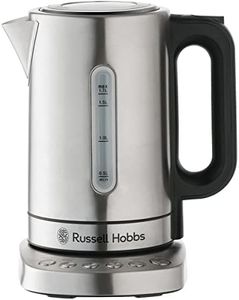
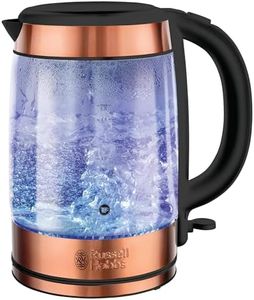
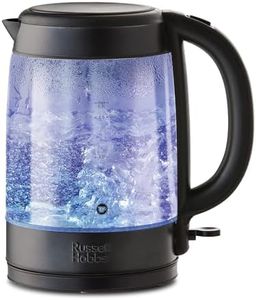

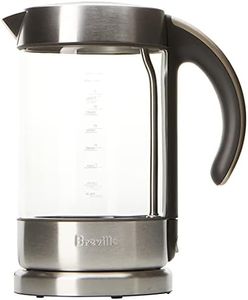
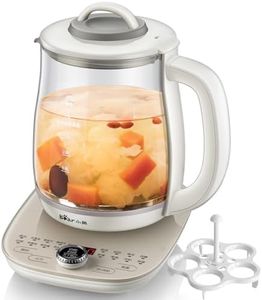
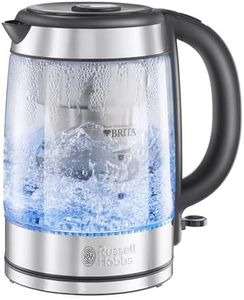
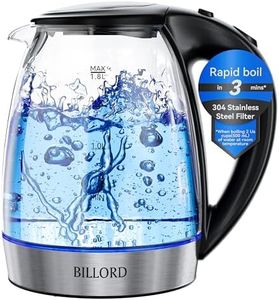
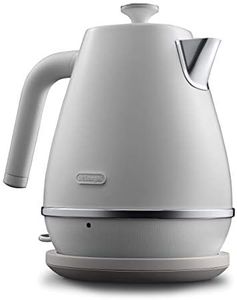
![Russell Hobbs Kettle Glass [1.7L, Temperature Setting 40-100°C] (Indoor Lighting, Soothing Sounds, Quiet Cooking Technology, Keep Warm Function, Display & Touch Control, 2400W) 27450-70](https://images-proxy.bestreviews.guide/Izy7fxBKSFSQT9xeMCr2tuGLWuk=/0x300/https://m.media-amazon.com/images/I/41M2XtQQKFL._AC_CX679_.jpg)
